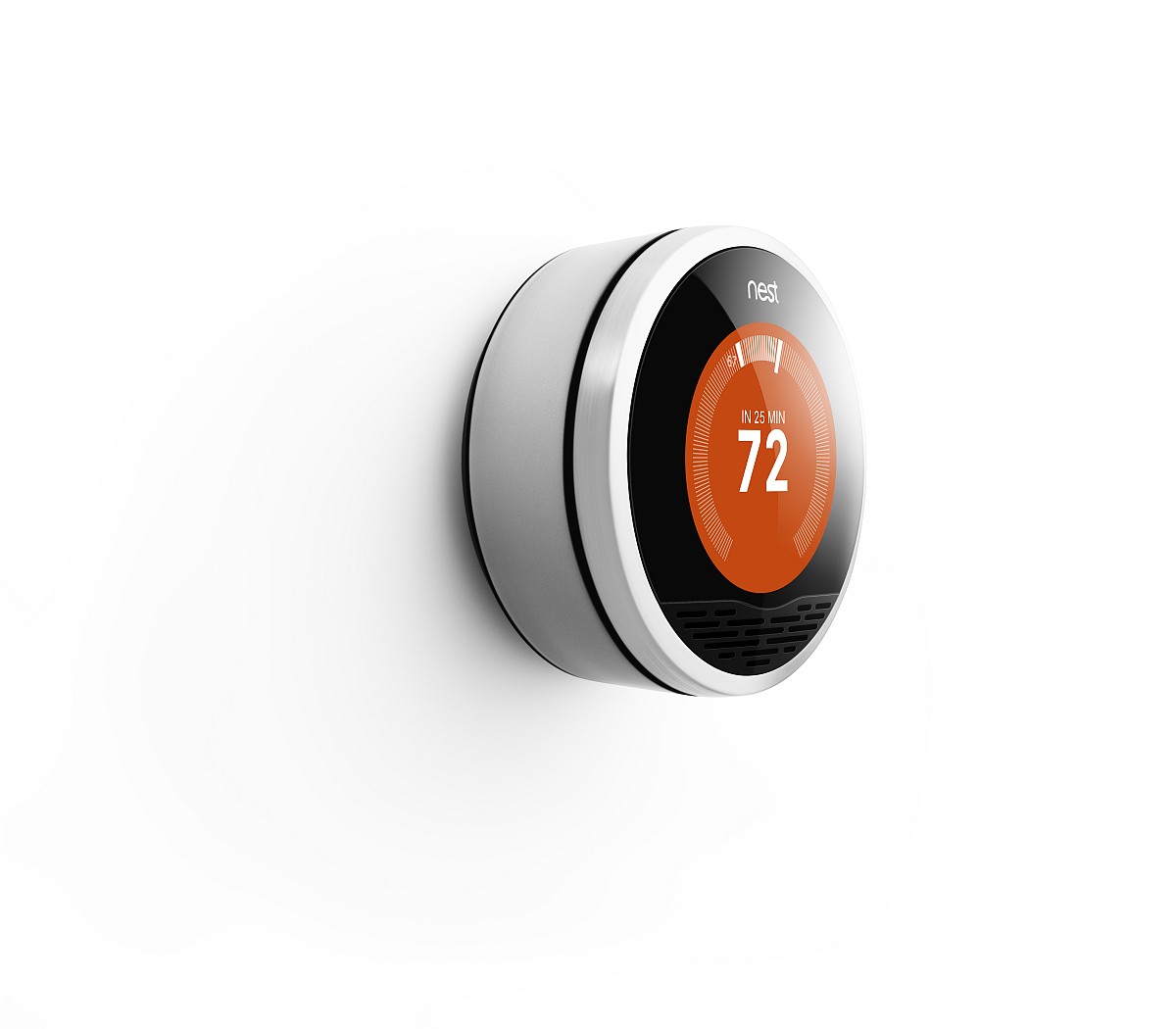Is Nest Right for You?
 Nest is the world's first “learning” thermostat. Here's how it works: You install it just like a regular model, then set it manually for the first week, turning the temperature up and down to suit your schedule and comfort level. All the while, Nest records the times and settings and even knows when the house is empty and what the weather report is in your area. It uses this information to create a schedule that keeps your home at a comfortable temperature while preventing energy-wasting habits like leaving the heat on all day while you're at work.
Nest is the world's first “learning” thermostat. Here's how it works: You install it just like a regular model, then set it manually for the first week, turning the temperature up and down to suit your schedule and comfort level. All the while, Nest records the times and settings and even knows when the house is empty and what the weather report is in your area. It uses this information to create a schedule that keeps your home at a comfortable temperature while preventing energy-wasting habits like leaving the heat on all day while you're at work.
In essence, Nest is a programmable thermostat that does most of the programming for you. It was created by Tony Fadell and Matt Rogers, key members of the team that helped create Apple's iPod. Nest currently retails for $249.
Will It Help You Save Energy and Money?
The answer to this question primarily lies in your answer to one other question: Do you frequently forget to adjust your thermostat? If yes, then Nest probably could save you money in the long run, and it's likely to be more effective and easier to use than conventional programmable thermostats. If no (and especially if you understand how a thermostat works and you don't do stupid things like crank the heat way up to make it happen faster), then Nest is not likely to result in significant energy savings. The potential savings for all programmable thermostats are based on the common reality that many people are too forgetful (or lazy) to adjust their thermostats for maximum comfort and efficiency. If you already do that, Nest might make things more convenient for you, but it probably won't save you much.
Notable Features
Saving energy isn't the only selling point of Nest. Here are a few of its many features that should draw attention in the marketplace:
Time to Temperature: This is a little timer that tells you how long it will take for your home to heat up (or cool down) to the set temperature. According to the support video, this helps prevent users from cranking the heat way up in the completely erroneous belief that it will speed up the heating.
Remote Operation: When you're away from home, you can adjust Nest via the Internet or smart phone. So if you end up working extra late or suddenly decide to run off on a last minute trip, you can override Nest's regular schedule accordingly.
Auto-Away: Relying on "activity sensors," Nest will lower the heat automatically if it thinks you've left the house for an extended (and unscheduled) period. This feature alone makes the device much smarter than conventional programmable thermostats, which run according to a preset schedule regardless of the household activity.
Design Appeal
I'm cheap, and I'm keenly aware of my thermostat setting at all times of the day. It's highly unlikely that Nest would save me $250 over its lifetime. That said, the feature of Nest I appreciate above all others is its design. It's not only the world's first learning thermostat, it's also the world's first attractive thermostat. Who couldn't warm up to its elegant visage and friendly personality, just like we've all done with so many great Apple products (although this isn't an Apple product)? As with the iPod, the iPhone and every Mac ever made, Nest is based on incredibly sophisticated engineering that on the surface is fun and easy to use. That alone is sure to sell a lot of these pricey little units.
Philip Schmidt is a Networx - https://www.networx.com - writer. Get home & garden ideas like this - https://www.networx.com/article/is-nest-right-for-you - on Networx.
Looking for a Pro? Call us (866) 441-6648

Heating & cooling Average Costs
HVAC Contractors Experiences

Restaurant Ceiling Fan Installation To Beat The Florida Heat

A Simple HVAC Repair Stopped Our Air Conditioner Blowing Hot Air



